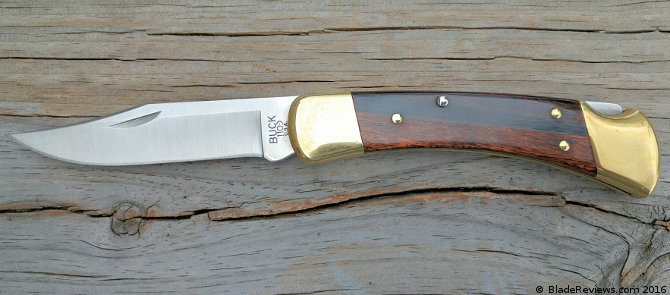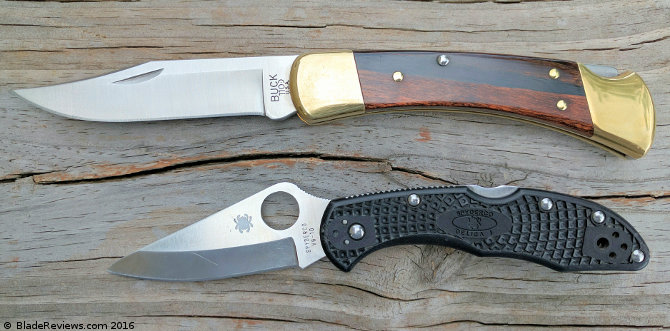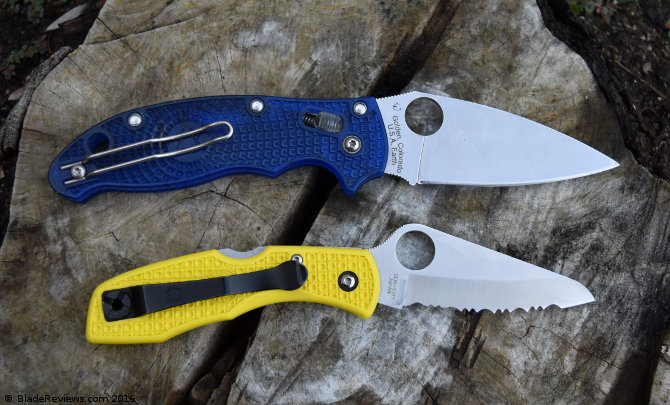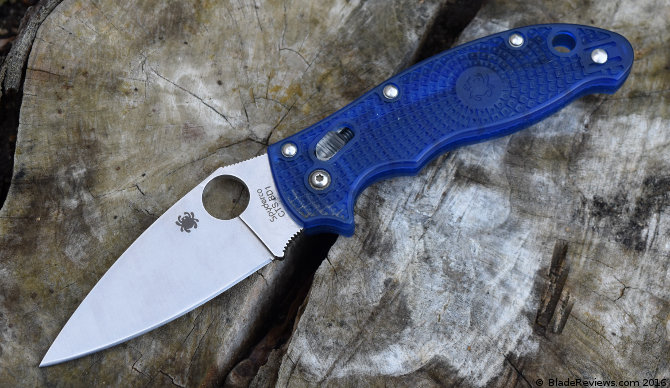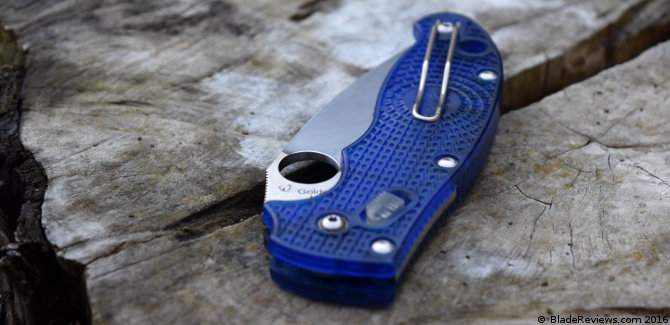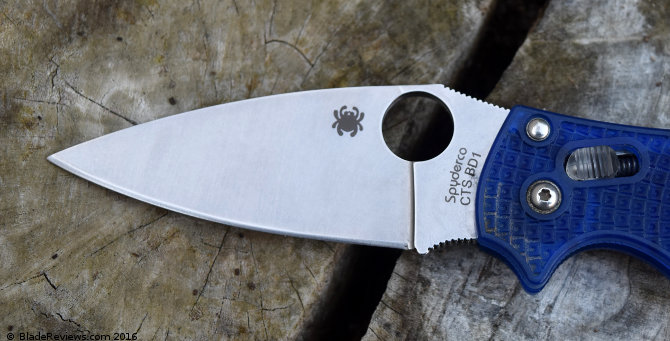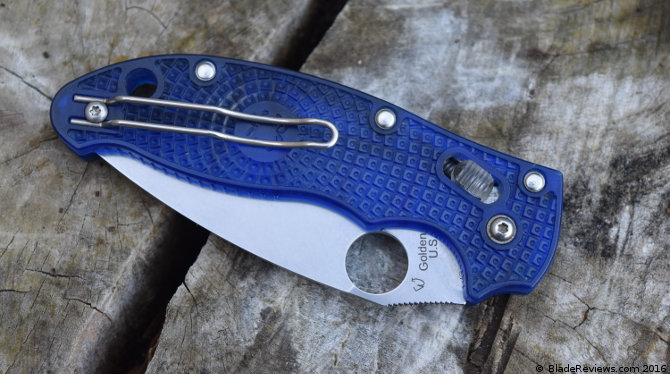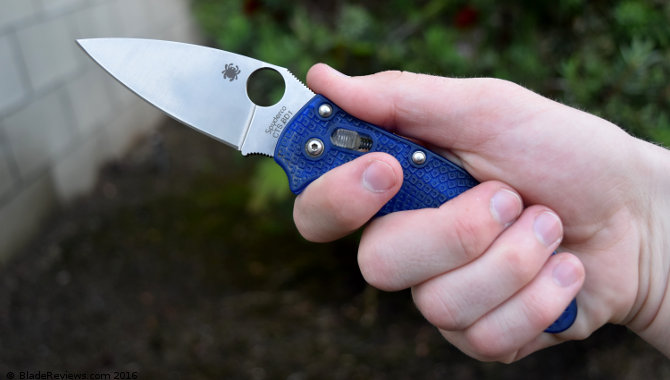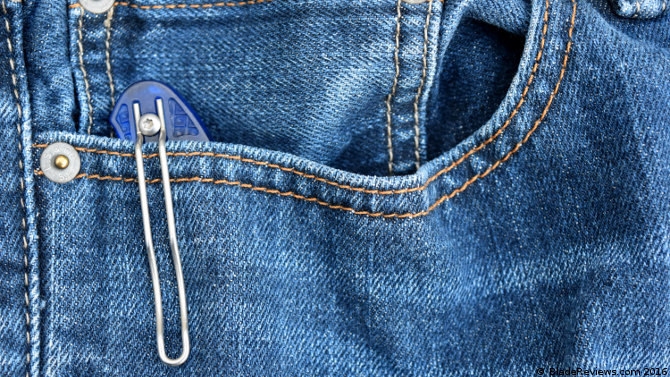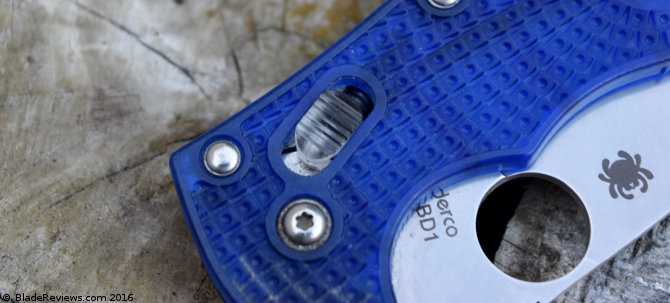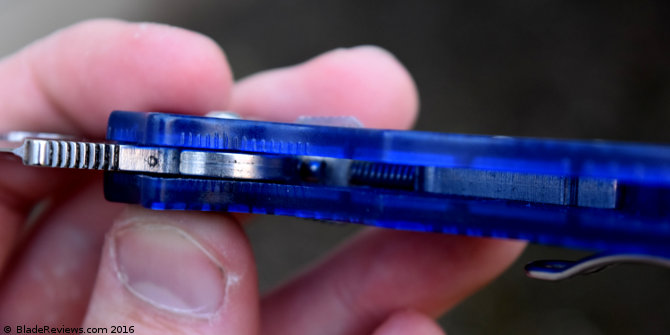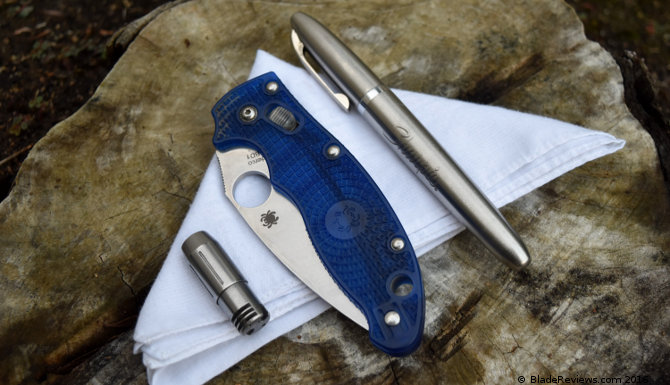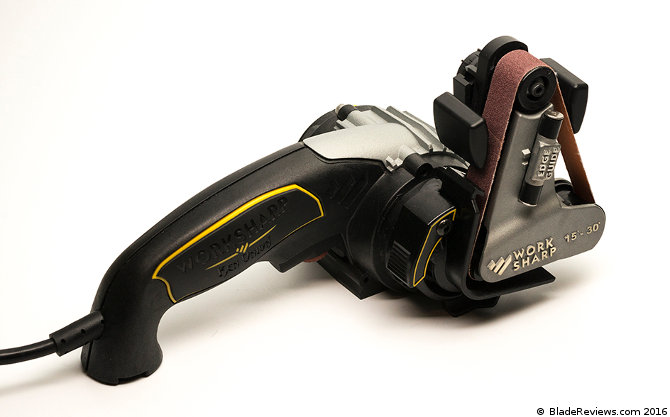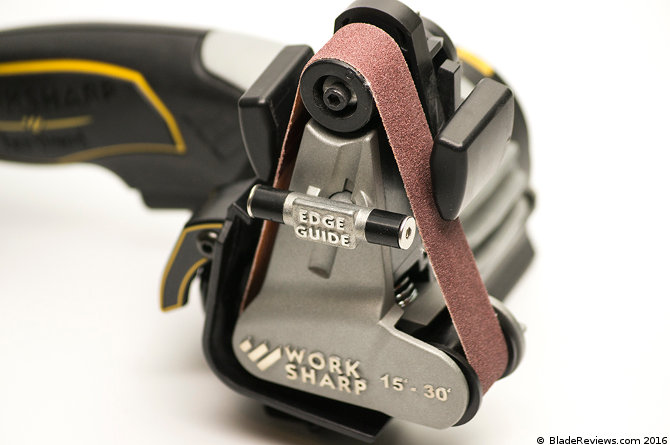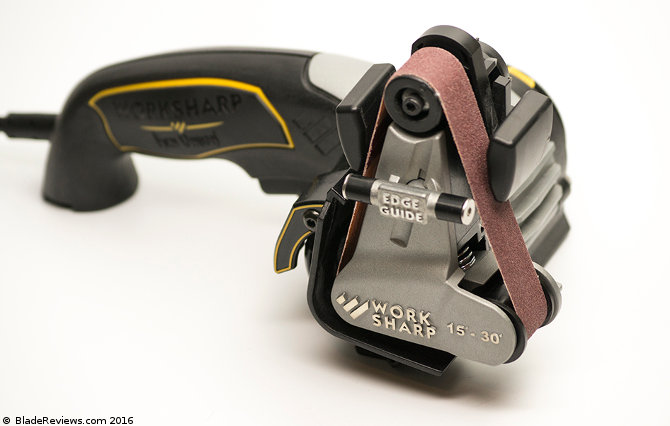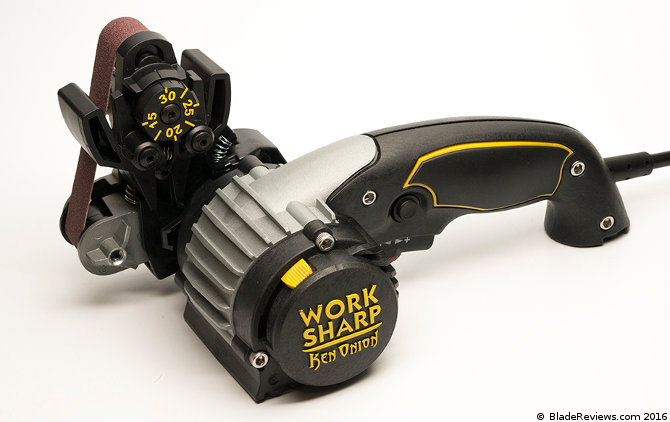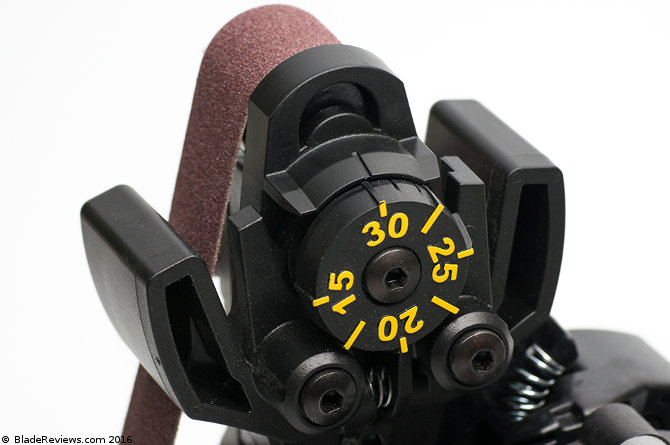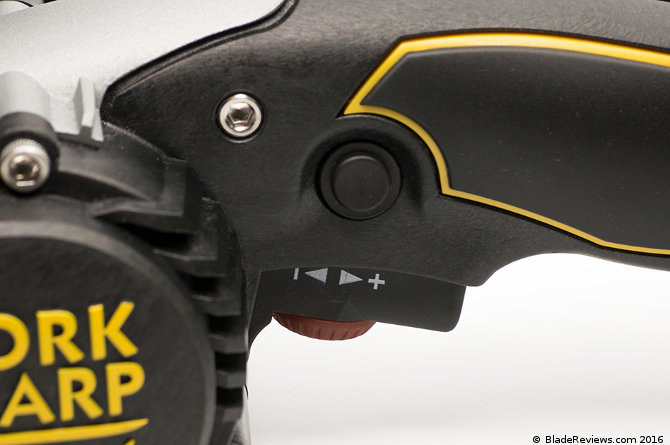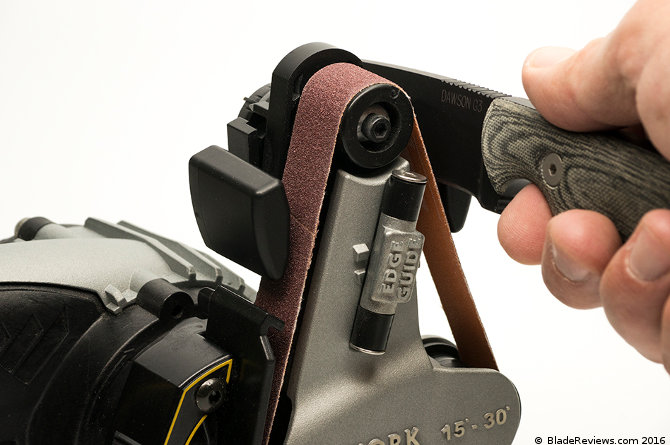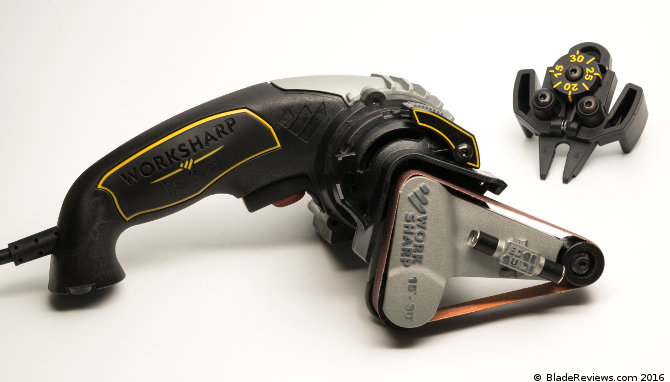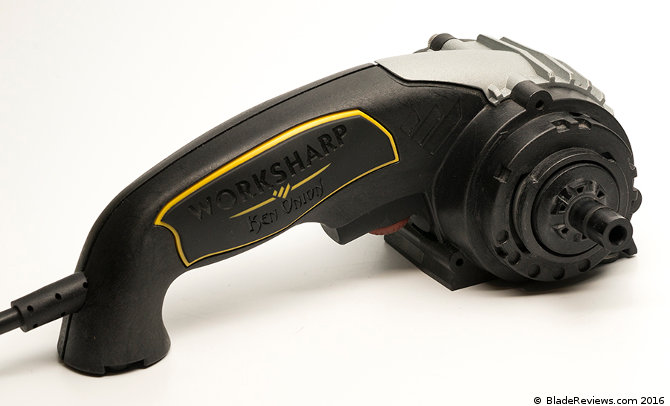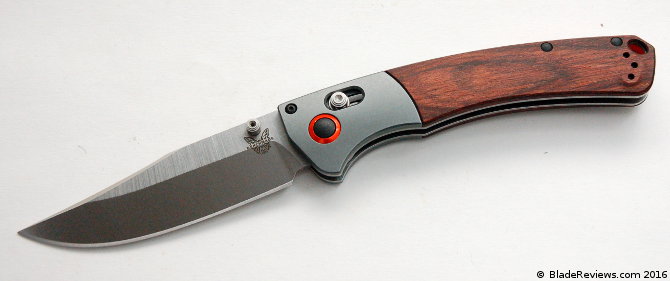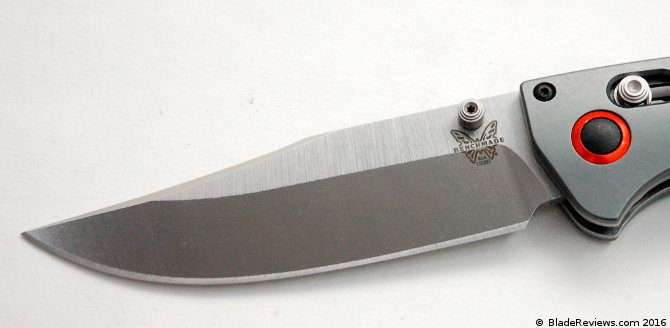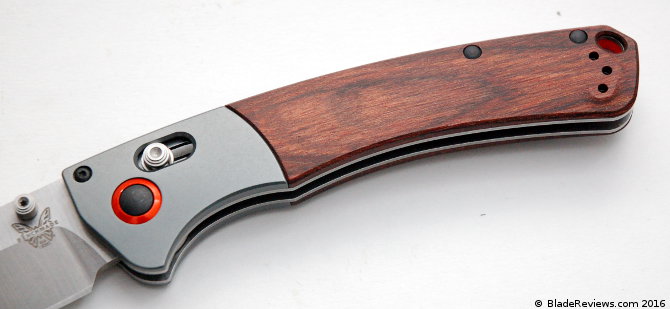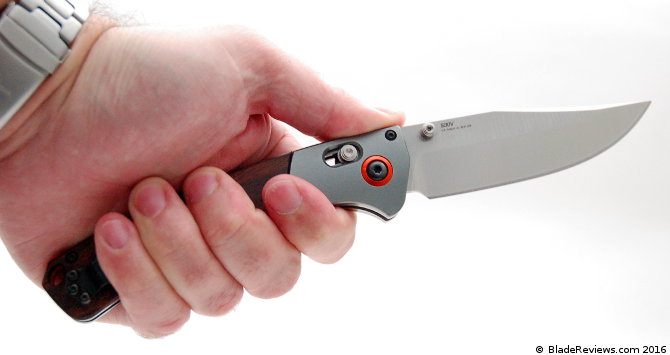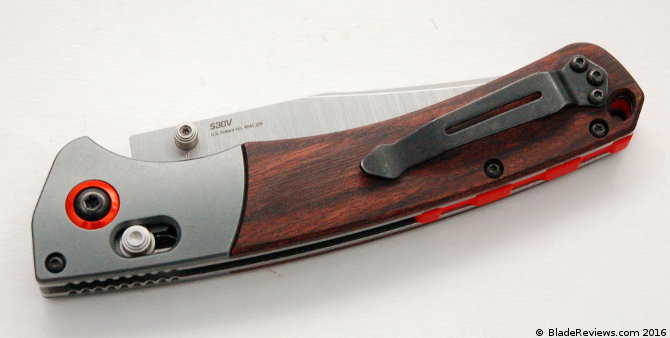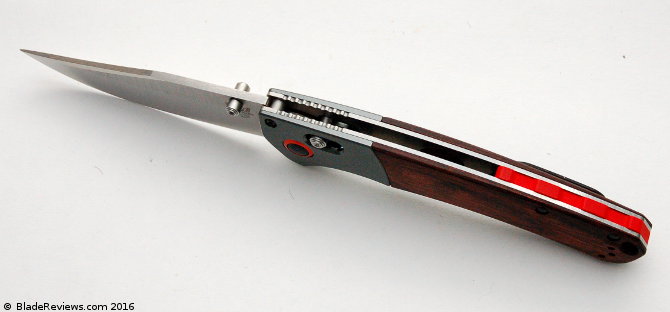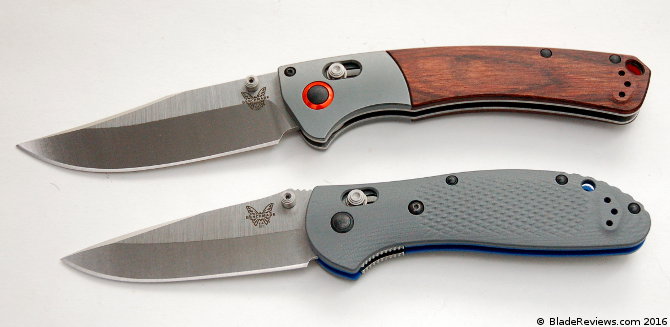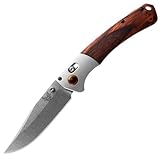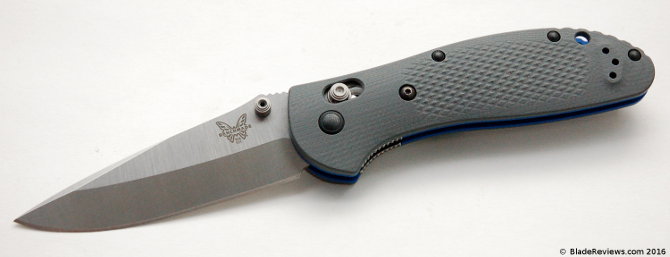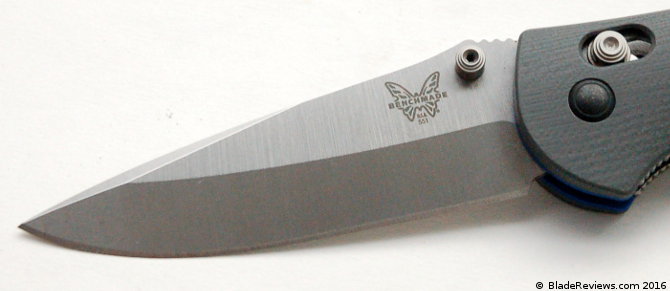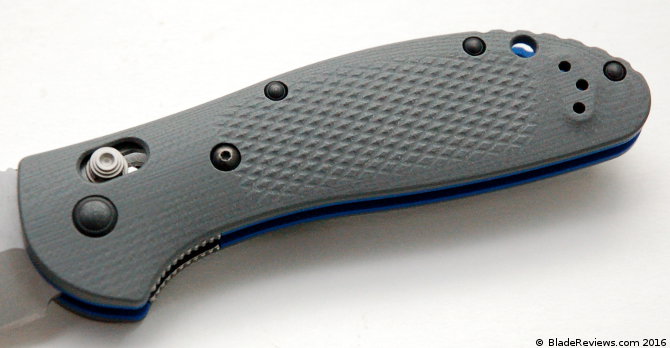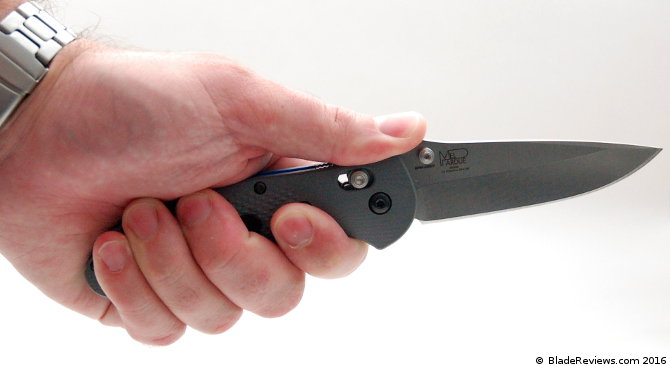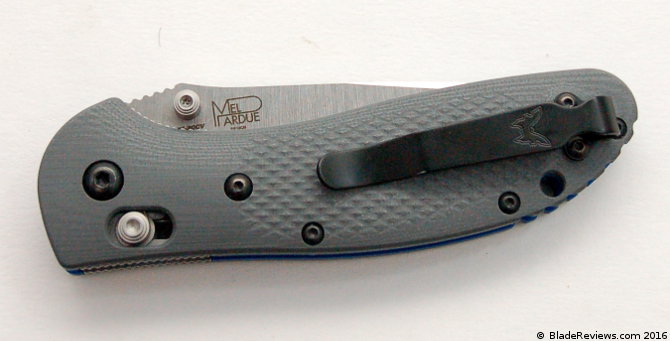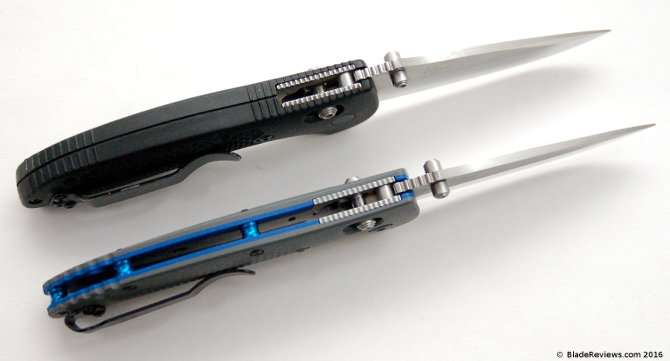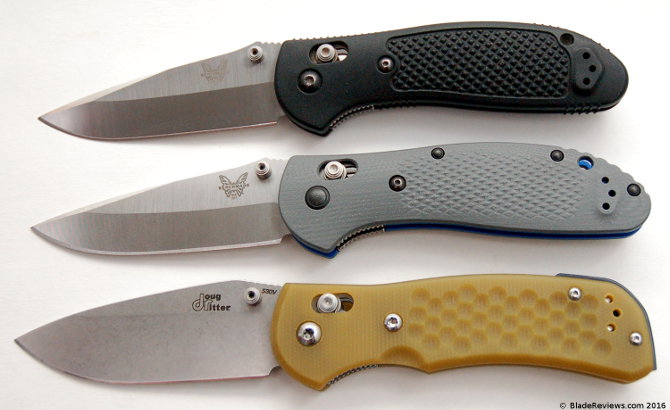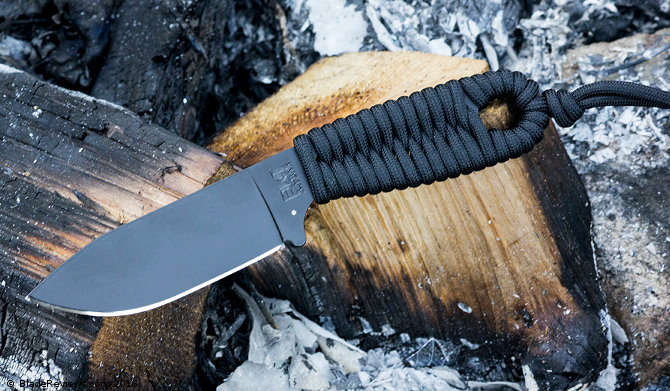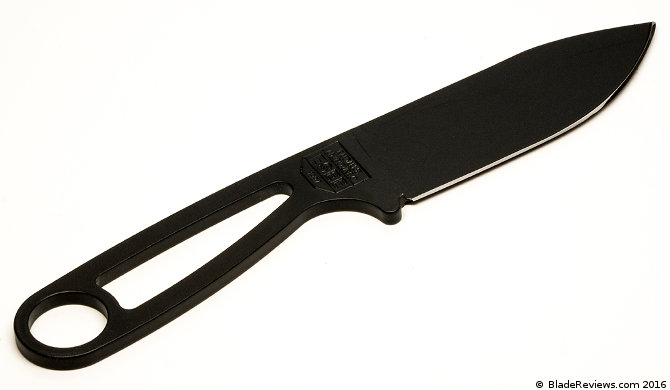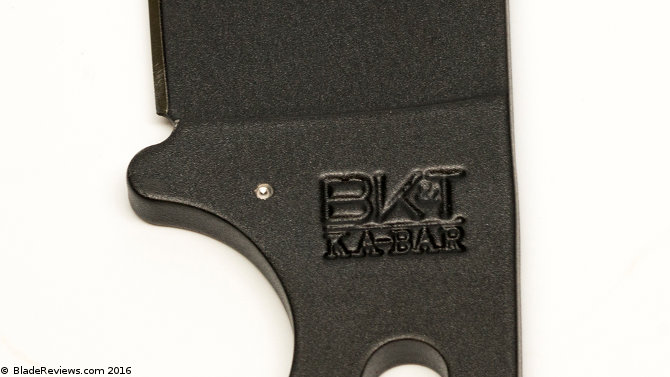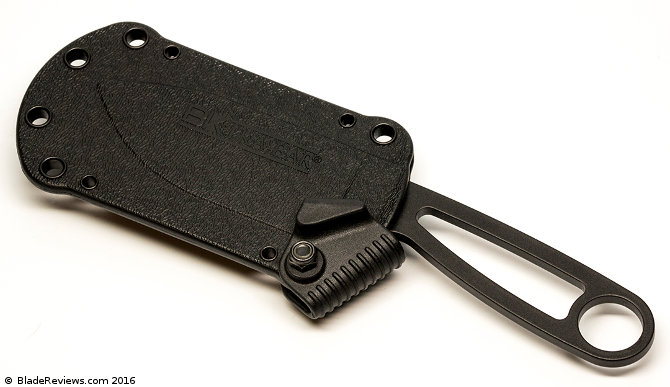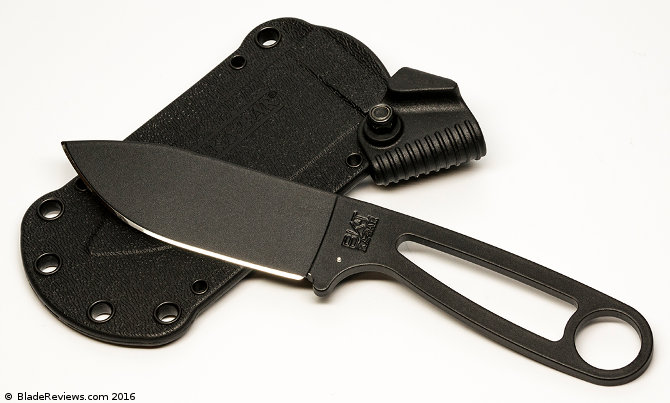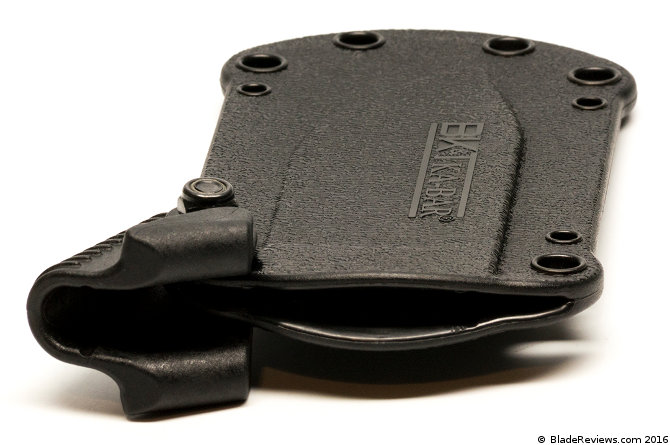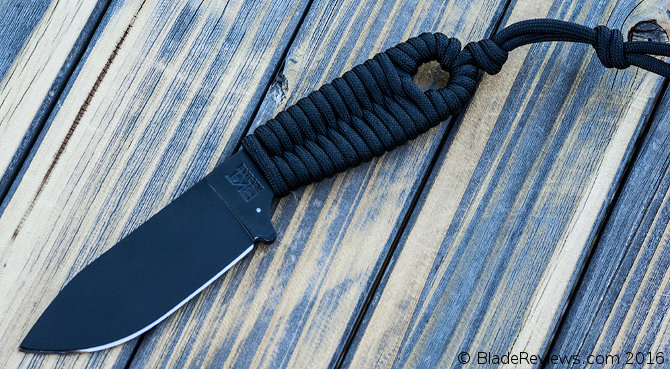No history of the folding pocket knife is complete without the Buck 110 Folding Hunter. It is arguably the first modern folder, in ethos if not in design. “Buck knife” is now a catch-all term for a certain style of blade, and the 110 is responsible for that. More than other knife besides the Swiss Army Knife, the Buck 110 is an icon.
But for all that it heralds modern folder design, the 110 is more antithetical to a Paramilitary 2 or a Griptilian than a traditional knife. It’s a question of refinement. Traditionals evolved on a separate path, and even if that evolution peaked 100 years ago there is a lot more refinement in a Case Peanut than in the 110. Its design is iconic and influential, but it does seem crude by modern standards.
Is it fair to hold the 110 to modern standards? Well, Buck still markets this knife as a tool, not a collectible. The implication here is that they believe it is a competitive offering in today’s knife market. And crude doesn’t necessarily equate to bad. So I’ve tested it as I would any other knife under review, and after several weeks of dedicated carry and use, I have come to my conclusions regarding the 110.
General Dimensions and Blade Details
The 110 has a handle length of 4 ¾”, a blade length of 3 ¾”, and an overall length of 8 9/16”. It weighs 7.2 oz. The lines of the 110 are so familiar that I hardly need to go over them. The gleaming brass bolsters and wooden scales have been copied by dozens and dozens of manufacturers over the years. Although I take issue with Buck’s decision to keep the 110 design more or less as is for 50 years, I can certainly sympathize with it. Buck struck a chord with the 110. There are major issues with the tolerances, but the finish on the 110 is quite good for a $40 knife. This is a handsome blade.
And beyond looks the 110 has plenty of merit, mainly thanks to its utter simplicity. I’ve talked about handles being task neutral before, but here we have a task neutral knife. Although called a hunter, there’s just an alchemy between the lines and proportions of the 110 that make it able to perform any kind of cutting task.
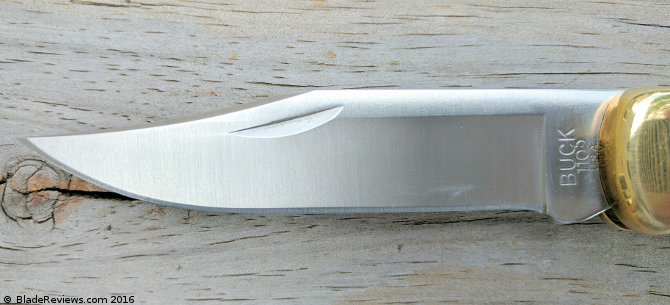
Some of that versatility is delivered by the blade shape. A low-slung, sharkish clip point, it leverages its length to great effect. The larger blade means that you have a decent run of straight edge before the sweep to the tip, so sawing and slicing are on the table. In relation to the handle, the belly is angled so that you can really push down and get through material quickly. The tip is acute for effective leading and good piercing. And, unlike many large blades, it is a great slicer. A workhorse blade shape that manages to retain its grace as well.
The steel is 420HC. Much is made of Buck’s Paul Bos heat treatments. I have no experience with this steel outside of Buck knives so I can’t say whether it makes a difference. The Buck/Bos 420HC is probably a smidge better than 8Cr13MoV, but not quite as good as AUS-8A. It dulls rather quickly, but you can sharpen the hell out of this 420HC very easily. Some steels, like VG-10, I can work and work and work on without getting past a certain level of sharpness. Here, 420HC got super sharp super quick, which I appreciate.
Handle, Ergonomics, and Carry
I have no complaints about the 110’s handle shape. The bow shape handle is as neutral as it gets. A lot of makers seem to think that we need finger grooves and scallops and jimping to show us the different ways we can hold our knife, but it is always better when the handle lets us decide. There isn’t a wrong way to hold the 110.
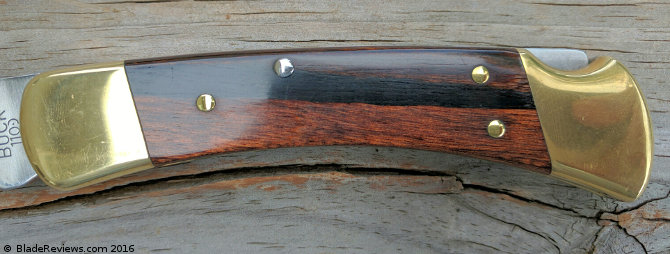
I find balance to be an essential part of good knife design. The closer the balance is to the pivot, the more control we have over the blade. The 110’s Dymondwod and brass construction lead to a rather Rubenesque knife. Balance is right in the middle of the handle, where the swell is most pronounced – a decent distance from the pivot. There’s nothing unpleasant about this while holding the knife, but in use it means you lose so much control for finer work. A shame, considering the surprising competency of this nearly 4” in delicate tasks.

But where the weight really kills the 110, of course, is in carry. There is no better way to learn about the advantages of lightweight knives than to spend a little time with a Buck 110. No clip here. My 110 came with a leather sheath, the traditional carry method for this knife, but I find that to be impractical for day-to-day suburban life, so my 110 rode in the back pocket. It wasn’t good, but at 7.2 oz. you’re going to notice this thing wherever you have it. It’s less ‘just bad’ than it is ‘really unfeasible.’
Deployment and Lockup
The 110’s two-handed opening is a bummer. Nail nicks are part of the charm of traditional knives, but the 110 isn’t a traditional knife. That’s why it’s famous. On the other hand I understand that thumb studs weren’t a common sight when the 110 came out, so I’m not faulting Buck for releasing the 110 without them, I just wish that they would have added them at some point in the last 50 years.
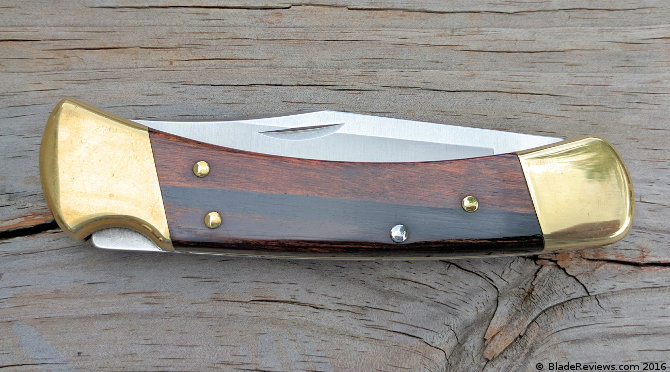
Complaints aside, the nail nick on the 110 works well, as does simply pinching the blade as I normally do on my Opinel. The opening action is smooth and positive, and the sound when the lock engages is satisfying, and all of this was how the knife was out of the box. You expect these things to feel right on a classic, and they do.
Much less right is the lock. I have faith in its safety, but it’s sloppy. From day one there was play in every direction on my 110, and the lock bar flexes quite readily during hard downward cuts. If I don’t sound particularly disappointed it’s probably because it’s the level of QC I’ve come to expect from Buck – which is itself the worst kind of condemnation.
If Buck is going to continue to espouse the virtues of stateside production, I really would like to see them recognize the level of competition out there and up their game. Newer products like the Marksman seem to indicate they’re capable of tight tolerances and complicated designs, and I for one would willingly pay more to see that same attention to detail on their flagship product.
Buck 110 Folding Hunter – Final Thoughts
There is no unqualified recommendation I can make for the 110 other than collectability. If you’re interested in knives and the history of their design, the 110 is 100% required reading. But as a tool, in any application, I can suggest a dozen other knives that outperform it. I can suggest better cutters, better locks, better fit and finish, all at or around the same price and all considerably lighter.
Buck is a company with a proud history, and the 110 is central to that history. I think they’ve convinced themselves that, by changing the 110, they are flouting the tradition it represents. That’s simply not true. Spyderco has been tweaking their flagships for years and nobody’s forgotten the significance of the Delica. There is a difference between honoring your past and being imprisoned by it. It’s frustrating that there aren’t readily available modern variations on the 110 from Buck. A model with G-10 scales, aluminum bolsters, and a clip would be cool. KA-BAR recently released such a knife and it is 2 oz. lighter than the 110.
I don’t even know that it’s a particularly good value at $40. The finish is good in a rough and tumble, barroom countertop kind of way, but the tolerances are way below par. I think that Buck is still trying to work out its priorities and in the meantime customers are left in the lurch with some very shoddy production. The Mini Spitfire I handled was worse than this, but not much worse.
The iconic character of the 110 saves it from being a total pass. This is real knife history that can be had for $40. Go grab one and see how far we’ve come. You’ll learn a lot, but don’t expect to end up using it much. It’s hard not to like the 110, but it is even harder to want to carry it.
If you are considering buying a Buck 110, I recommend purchasing it at Amazon or BladeHQ. By purchasing things through any of the links on this website you support BladeReviews.com, keep the website free of annoying banner ads, and help produce future reviews. Thank you very much.
